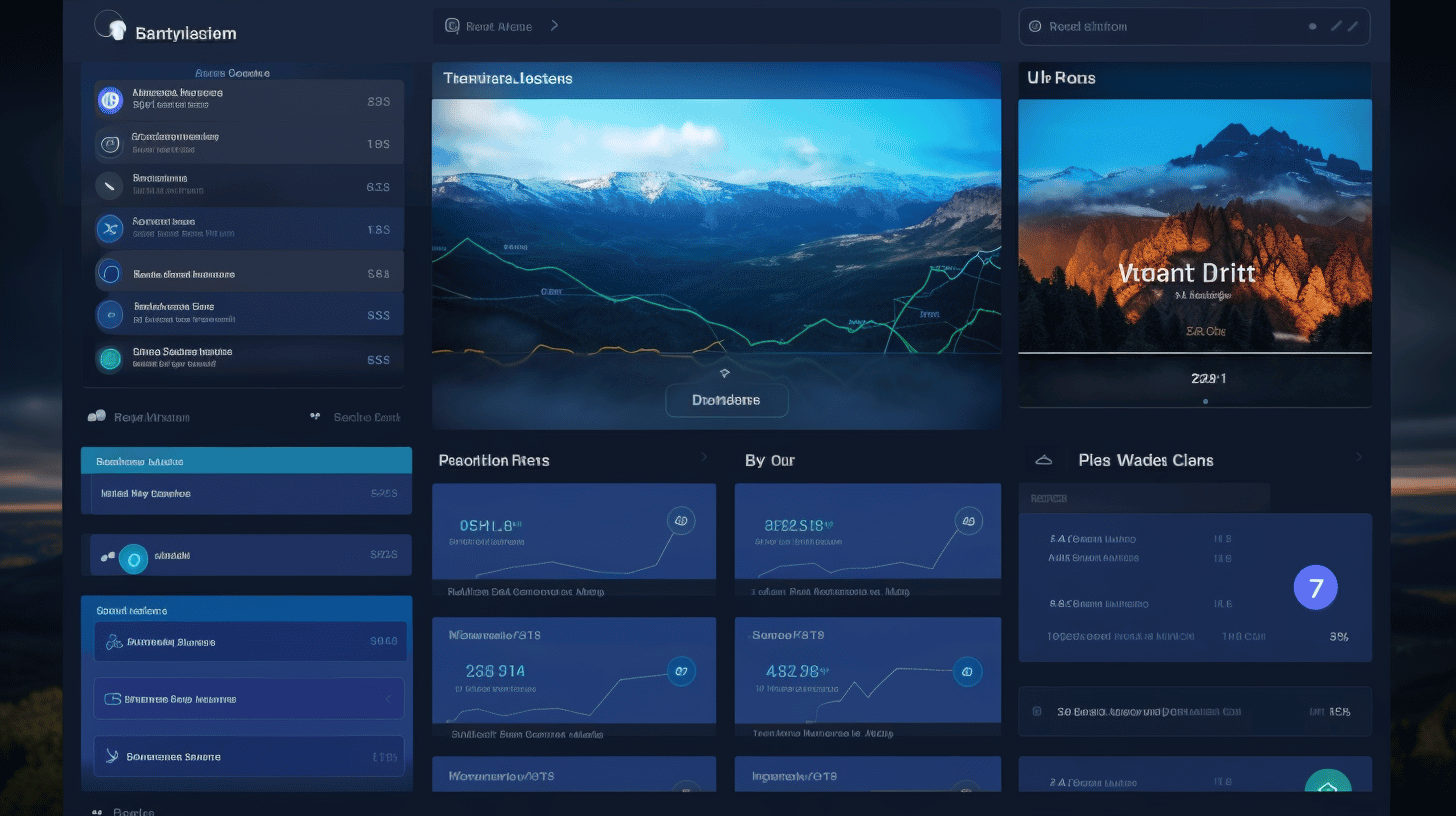在当今的数字时代,网站用户变得越来越没有耐心。他们希望网站能够快速无缝地加载,如果没有得到他们想要的结果,他们很快就会点击后退按钮并转到下一个选项。
网站速度已成为决定网站成功与否的关键因素。它不仅影响用户体验,而且在搜索引擎排名中也起着重要作用。加载缓慢的网站会赶走潜在客户并损害您的在线形象。
那么,如何才能实现更快的网站速度并优化您的 WordPress 网站,为您的用户提供闪电般的体验?在本文中,我们将探讨各种策略、工具和技术,以帮助您实现最佳网站性能。
从选择正确的 WordPress 主题到托管注意事项和优化技术,我们将涵盖所有内容。在本文结束时,您将全面了解如何加速您的 WordPress 网站并创建无缝的用户体验。
因此,事不宜迟,让我们深入了解 WordPress 工具和技术的世界,这些工具和技术将帮助您实现更快的网站速度并提升您的在线形象。🚀
网站速度的重要性
在当今快节奏的数字世界中,网站速度对企业来说越来越重要。研究表明,加载缓慢的网站会对用户体验、客户满意度甚至转化率产生重大影响。随着注意力持续时间的减少和竞争的加剧,企业不能忽视优化网站速度的重要性。
💡 您知道吗?页面加载时间延迟一秒就会导致转化率降低 7%。
加载时间缓慢的影响
如果网站加载时间过长,访问者就会变得不耐烦,可能会决定完全放弃该页面。以下是加载时间过长对您的业务造成不利影响的一些主要原因:
- 负面的用户体验: 加载缓慢的网站会让用户感到沮丧,并影响他们的整体体验。研究表明,如果网站加载时间超过三秒,40% 的访问者会放弃该网站。
- 能见度下降: 谷歌等搜索引擎将网站速度视为排名因素。加载缓慢的网站可能会在搜索结果中排名较低,从而导致知名度和自然流量下降。
- 更高的跳出率: 如果加载时间过长,访问者就不太可能浏览网站或与其内容互动。这会导致更高的跳出率,从而对网站的整体性能产生负面影响。
- 失去的收入机会: 网站加载缓慢会直接影响您的收益。如果访问者因为加载速度慢而放弃您的网站,您就会错失潜在的销售和创收机会。
优化 WordPress 助力业务成功
对于使用 WordPress 作为内容管理系统的企业来说,优化网站速度对于成功至关重要。WordPress 优化技术可以显著提高网站性能并增强用户体验。以下是一些需要考虑的重要 WordPress 优化策略:
- 选择可靠的托管服务提供商: 快速可靠的托管服务提供商是高性能网站的支柱。寻找提供可靠基础设施、充足资源和速度优化良好记录的托管服务提供商。
- 优化网站图片: 大型图像文件会减慢页面加载时间。压缩和优化图像可以显著减小文件大小,而不会影响质量。
- 利用缓存: WP Rocket 或 W3 Total Cache 等缓存插件可以通过存储经常访问的数据、减少服务器负载和提高整体性能来提高网站速度。
- 压缩 CSS 和 JavaScript: 压缩 CSS 和 JavaScript 文件可以删除不必要的代码并减小文件大小,从而提高网站速度。
- 删除不必要的插件: 未使用或过时的插件会严重降低您的网站速度。定期审核您的插件并删除不必要的插件。
💼专业提示:考虑与 ManagedWP 等 WordPress 优化服务合作,该服务专门为企业提高网站速度和性能。
通过优先考虑网站速度并投资于 WordPress 优化,企业可以为客户创造无缝且用户友好的在线体验。更快的加载时间不仅可以提高用户满意度,还可以提高搜索引擎排名和转化率。
请记住,在当今的数字环境中,速度至关重要。确保您的网站能够满足受众的需求并保持领先于竞争对手。
有关 WordPress 优化的更多见解, 点击这里.
使用正确的 WordPress 主题
在浩瀚的 WordPress 主题海洋中,为您的网站找到完美的主题可能是一件令人不知所措的事情。然而,选择正确的主题是一个关键的决定,它会对您网站的性能和用户体验产生重大影响。所以,让我们深入 WordPress 主题的世界,探讨选择轻量级主题并定期更新它们的重要性。
选择轻量级主题
说到网站速度,每一秒都至关重要。研究表明,页面加载时间延迟一秒会导致转化率降低 7%。这就是为什么选择针对速度进行优化的主题至关重要。以下是轻量级主题可以改变游戏规则的几个原因:
- 更快的加载速度:轻量级主题设计精简高效,可缩短您网站的加载时间。这可以改善整体用户体验并让您的访客感到满意。
- 改进 SEO:页面速度是搜索引擎优化 (SEO) 的一个关键因素。Google 表示,速度更快的网站往往在搜索结果中排名更高。通过选择轻量级主题,您可以让您的网站在搜索引擎排名中占据竞争优势。
- 更好的移动体验:由于大多数互联网用户都在移动设备上浏览,因此拥有一个响应迅速且加载速度快的网站比以往任何时候都更加重要。轻量级主题通常针对移动设备进行了优化,可确保您的网站在智能手机和平板电脑上看起来很棒并且运行良好。
- 灵活性和定制化:轻量级主题通常内置的功能和选项较少,这听起来可能是一个缺点。然而,这实际上允许更多的灵活性和定制。您可以只添加所需的功能和插件,减少臃肿并保持网站优化。
定期更新主题
一旦选择了适合您需求的轻量级主题,就必须保持其最新状态。定期更新 WordPress 主题可带来诸多好处,包括:
- 安全增强功能:主题开发人员发布更新来修补可能发现的任何安全漏洞。通过保持主题更新,您可以最大限度地降低网站被恶意行为者入侵的风险。
- 问题修复:更新通常包括修复主题中存在的问题或故障。这可确保您的网站继续顺畅运行并提供无缝的用户体验。
- 与 WordPress 更新的兼容性:WordPress 经常发布更新以改进功能和安全性。主题更新可确保您的网站与最新版本的 WordPress 保持兼容,从而避免可能出现的任何兼容性问题。
- 性能优化:开发人员可能会在更新中优化主题代码,从而提高性能并加快加载速度。通过定期更新主题,您可以利用这些优化并让您的网站保持最佳运行状态。
总之,选择针对速度进行优化的轻量级主题并定期更新 WordPress 主题是确保网站获得最佳性能和用户体验的两个重要步骤。因此,请花点时间找到适合您需求的主题并保持更新,以在数字领域保持领先地位。
🌟 专业提示:在对实时网站进行任何更改之前,最好先创建备份。这样,如果在主题更新过程中出现任何问题,您就可以将网站恢复到以前的状态。
托管注意事项
在托管 WordPress 网站时,有几个关键考虑因素会极大地影响其性能和速度。从选择合适的托管服务提供商到确保您拥有快速的 Web 服务器,这些因素对于为访问者提供最佳用户体验至关重要。在本节中,我们将探讨这些托管考虑因素的重要性以及它们如何对您的网站产生积极影响。
WordPress 托管服务提供商
选择可靠且快速的 WordPress 托管服务提供商对于您网站的整体性能至关重要。以下是一些原因:
- 服务器优化: 好的托管服务提供商会专门针对 WordPress 优化他们的服务器,以确保您的网站具有更好的兼容性和性能。
- 服务器正常运行时间: 寻找能够保证高服务器正常运行时间百分比的托管服务提供商。这可确保访问者能够不间断地访问您的网站。
- 安全措施: 信誉良好的托管服务提供商将实施强大的安全措施,保护您的网站免受恶意软件和黑客等网络威胁。
- 客户支持: 选择提供可靠且响应迅速的客户支持的托管服务提供商。如果您的网站出现任何问题,及时获得帮助可以节省您的时间和精力。
更快的 Web 服务器
在考虑托管时,另一个重要因素是 Web 服务器的速度。更快的 Web 服务器可以显著缩短网站的加载时间,从而带来更好的用户体验。以下是确保 Web 服务器速度更快的几种方法:
- 服务器位置: 选择服务器位置靠近目标受众的托管服务提供商。这可以减少服务器和用户设备之间的延迟,从而缩短加载时间。
- CDN 集成: 考虑使用内容分发网络 (CDN) 将网站内容分发到全球多个服务器上。这有助于缩短用户和服务器之间的距离,从而缩短加载时间。
- 服务器硬件: 请咨询您的托管服务提供商,了解其服务器的硬件规格。选择使用更新、更强大硬件的托管服务提供商,以确保更快的处理速度。
- 缓存机制: 实现浏览器缓存、服务器端缓存等缓存机制,以减少网络服务器的负载,提高网站性能。
请记住,您为 WordPress 网站选择的托管服务提供商和 Web 服务器对其整体性能起着至关重要的作用。通过选择可靠的托管服务提供商并优化 Web 服务器的速度,您可以确保为访问者提供无缝且快速的体验。
“选择快速的 WordPress 托管服务提供商有助于提高网站性能。”
“使用可靠的服务器有助于加快网站速度。”
优化技术和工具
在当今快节奏的数字世界中,拥有一个加载速度快的网站至关重要。加载缓慢的网站不仅会让访问者感到沮丧,还会导致失去机会和潜在客户。因此,优化网站的性能应该是重中之重。幸运的是,有几种技术和工具可以帮助增强您的 WordPress 网站的性能并提供卓越的用户体验。让我们探索一些最有效的优化技术和工具。
图像优化
图片在增强网站的视觉吸引力方面发挥着重要作用。但是,较大的图片文件会显著降低网站的加载速度。要优化图片并提高性能,请考虑以下几点:
- 将图像调整为适合在您的网站上显示的尺寸。
- 使用 Smush 或 ShortPixel 等图像压缩插件压缩图像而不影响其质量。
- 利用延迟加载技术仅在图像进入视野时加载它们。
通过实施这些图像优化技术,您可以减小图像的文件大小并提高网站的加载速度。
CSS 和 JavaScript 压缩
CSS 和 JavaScript 文件对于 WordPress 网站的设计和功能至关重要。但是,这些文件可能会因不必要的代码而变得臃肿,从而影响网站的性能。压缩 CSS 和 JavaScript 文件需要删除不必要的字符、空格和换行符,从而减小文件大小并加快加载时间。考虑使用 Autoptimize 或 WP Rocket 等插件来自动执行压缩过程。
内容分发网络(CDN)⚡
内容分发网络 (CDN) 是由遍布全球的服务器组成的网络,这些服务器协同工作,从距离访问者地理位置最近的服务器向访问者的浏览器分发网站资产(例如图片、样式表和脚本)。实施 CDN 可以最大限度地减少加载网站所需的 HTTP 请求数量并减少延迟,从而缩短页面加载时间。热门 CDN 服务包括 Cloudflare、StackPath 和 MaxCDN。
核心网络生命力优化
随着 Google 推出核心网页指标,优化这些关键性能指标对于网站所有者来说变得至关重要。核心网页指标衡量加载速度、交互性和视觉稳定性等方面。优先优化核心网页指标可以大大提高您网站的用户体验和搜索引擎排名。Google PageSpeed Insights 或 GTmetrix 等工具可以帮助您确定需要改进的领域并提供相应的网站优化建议。
数据库和对象缓存
缓存是一种将经常访问的数据存储在临时存储位置的技术,可以加快访问速度并减少服务器请求。通过实施数据库和对象缓存,您可以显著提高网站的性能。考虑使用 W3 Total Cache 或 WP Rocket 等缓存插件来高效处理缓存。
使用性能监控工具
为了确保持续优化并跟踪网站的性能,使用性能监控工具至关重要。这些工具可以提供有关网站速度、加载时间和整体性能的宝贵见解。一些流行的性能监控工具包括 Google PageSpeed Insights、GTmetrix 或 WebPagetest。定期监控网站的性能可以帮助您识别瓶颈并做出明智的决策,以优化其速度和用户体验。
热链接保护🔒
热链接是指其他网站直接链接到您服务器上托管的图像或文件,这会导致服务器请求和带宽使用量增加。实施热链接保护可防止未经授权的热链接并减少不必要的服务器负载,从而帮助优化您网站的性能。
WordPress 选项和插件
优化 WordPress 网站的性能不仅仅需要使用技术。一些特定于 WordPress 的选项和插件可以帮助提高网站的速度和效率。请考虑以下几点:
- 禁用或删除可能会降低您网站速度的未使用的 WordPress 默认选项和功能。
- 利用 W3 Total Cache 或 WP Rocket 等缓存插件来提高您网站的性能。
- 选择 Smush 或 ShortPixel 等图像压缩插件来优化图像大小并提高加载速度。
通过优化这些 WordPress 特定选项并利用强大的插件,您可以进一步增强网站的性能。
请记住,实施这些优化技术和工具是一个持续的过程。定期监控网站的性能、分析数据并进行必要的调整以进行改进至关重要。通过优先考虑网站优化,您可以为访问者提供无缝的浏览体验,同时提高参与度和转化率。
要了解有关优化 WordPress 网站性能的更多信息,请查看 增强 WordPress 网站的性能.
常规网站性能监控
定期监控网站性能并跟踪进度对于任何在线企业或组织都至关重要。通过密切监控网站性能,您可以发现问题、进行改进并确保您的网站提供最佳的用户体验。在本节中,我们将探讨定期网站性能监控的重要性以及一些需要跟踪的关键指标。
为什么网站性能监控很重要?
网站性能直接影响用户满意度和参与度。如果您的网站加载速度很慢,访问者很可能会放弃它并转而寻找竞争对手的网站。监控网站性能可让您识别和解决任何速度或性能问题,确保您的访问者拥有顺畅无缝的体验。
网站性能监控还可以帮助您预防任何潜在问题。通过定期跟踪和分析性能指标,您可以识别任何可能表明存在潜在问题的异常模式或波动。这种主动方法可让您在问题变得严重并影响用户体验之前解决问题。
要跟踪的关键指标
在监控网站性能时,有几个关键指标值得关注。这些指标可以提供有关网站性能的宝贵见解,并有助于确定需要改进的地方。以下是一些需要考虑的基本指标:
- 页面加载时间: 此指标衡量网页完全加载所需的时间。页面加载时间过长可能会让访问者感到沮丧,并导致高跳出率。为获得最佳性能,请将页面加载时间控制在两秒或更短。
- 网站可用性: 监控网站的可用性可确保用户始终可以访问网站。网站停机可能会导致错失良机并损害您的品牌声誉。定期检查您的网站是否在线且可从不同位置访问。
- 转化率: 跟踪转化率可帮助您了解网站将访问者转化为客户或潜在客户的效果。通过监控转化率,您可以确定网站中可能需要优化的领域,以提高转化率和整体性能。
- 移动性能: 随着移动设备的使用日益增多,监控网站在移动设备上的表现至关重要。检查加载时间缓慢、移动设备友好设计和响应能力等问题,以确保在所有设备上获得无缝的用户体验。
- 流量来源: 监控网站流量来源可让您了解访客来自哪里。通过分析这些来源,您可以确定哪些渠道带来最多的流量,并相应地优化您的营销工作。
将常规网站性能监控纳入您的整体策略将帮助您确定需要改进的领域,优化用户体验并提前预防潜在问题。通过定期跟踪关键指标,您可以确保您的网站以最佳状态运行并提供积极的用户体验。
结论
在当今快节奏的网络世界中,网站速度是成功的关键。加载缓慢的网站会导致用户感到沮丧、转化率下降,甚至搜索引擎排名下降。因此,网站所有者必须优先优化他们的 WordPress 网站,以实现更快的加载速度。
通过使用正确的 WordPress 主题、考虑托管选项、采用优化技术以及实施监控工具,网站所有者可以显著提高网站速度。这不仅可以增强用户体验,还可以提高网站在搜索引擎结果中的表现。
Managed-WP™ 是一个高级托管 WordPress 云托管平台,它深知网站速度的重要性。他们提供全面的解决方案,简化基础设施,提供专业的 WordPress 支持,并结合主动监控以确保网站的最佳性能。
借助 Managed-WP™,网站所有者可以自由地专注于数字体验,同时将 WordPress 管理的技术方面交给专家。要了解有关 Managed-WP™ 如何帮助您实现更快的网站速度并增强您的在线形象的更多信息,请访问 managed-wp.com.
常见问题
- 有哪些有效的 WordPress 工具可以提高网站速度?
一些可以有效提高网站速度的 WordPress 工具是:1. WP Rocket、2. W3 Total Cache、3. Autoptimize、4. WP Super Minify 和 5. Smush。
- 为什么网站速度很重要?
网站速度很重要,因为它直接影响用户体验和搜索引擎排名。快速加载的网站可以提高用户满意度、降低跳出率并增加转化率。它还可以帮助搜索引擎更好地抓取和索引您的网站,从而提高搜索结果的可见性。
- 什么是 WP Rocket?它如何帮助提高网站速度?
WP Rocket 是一款流行的 WordPress 缓存插件,可通过创建静态 HTML 文件、减少数据库调用和启用浏览器缓存来提高网站速度。它还提供压缩、延迟加载和 DNS 预取选项,以进一步优化性能。
- 这些网站速度优化工具设置起来困难吗?
不,大多数提到的网站速度优化工具都很容易设置,尤其是在使用 WP Rocket、W3 Total Cache 和 Autoptimize 等插件时。它们带有用户友好的界面,并提供预配置设置,以便快速简单地进行优化。
- 我应该将所有这些速度优化工具一起使用吗?
没有必要同时使用所有这些速度优化工具,因为它们可能具有重叠的功能。选择一个可靠的缓存插件,如 WP Rocket 或 W3 Total Cache,并将其与其他工具(如 Autoptimize 或 Smush)配合使用,以优化网站性能的特定领域。



















